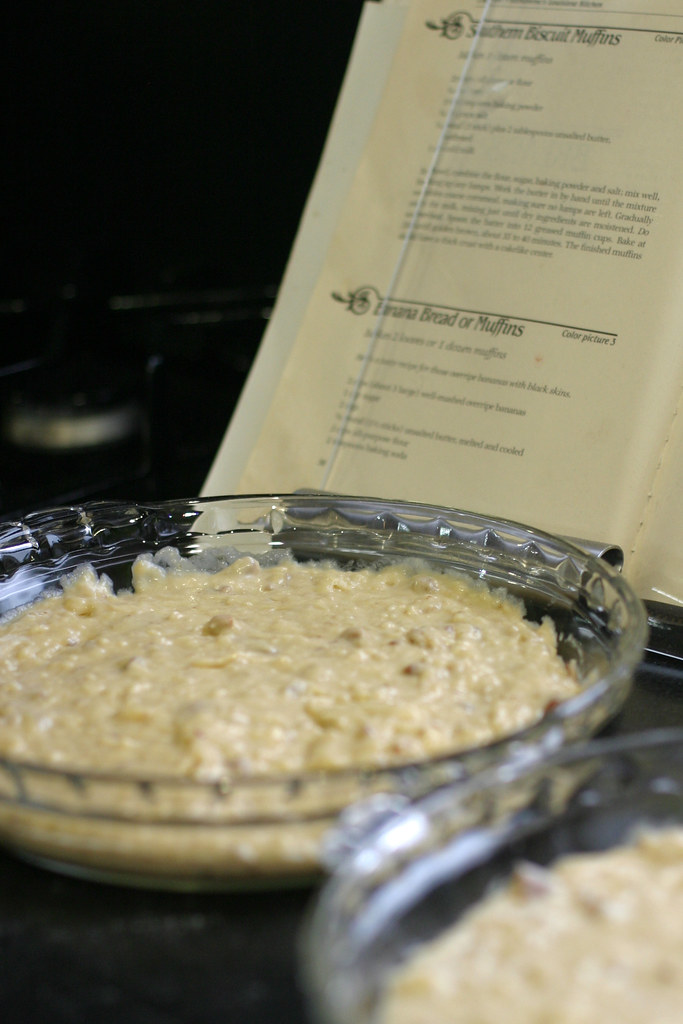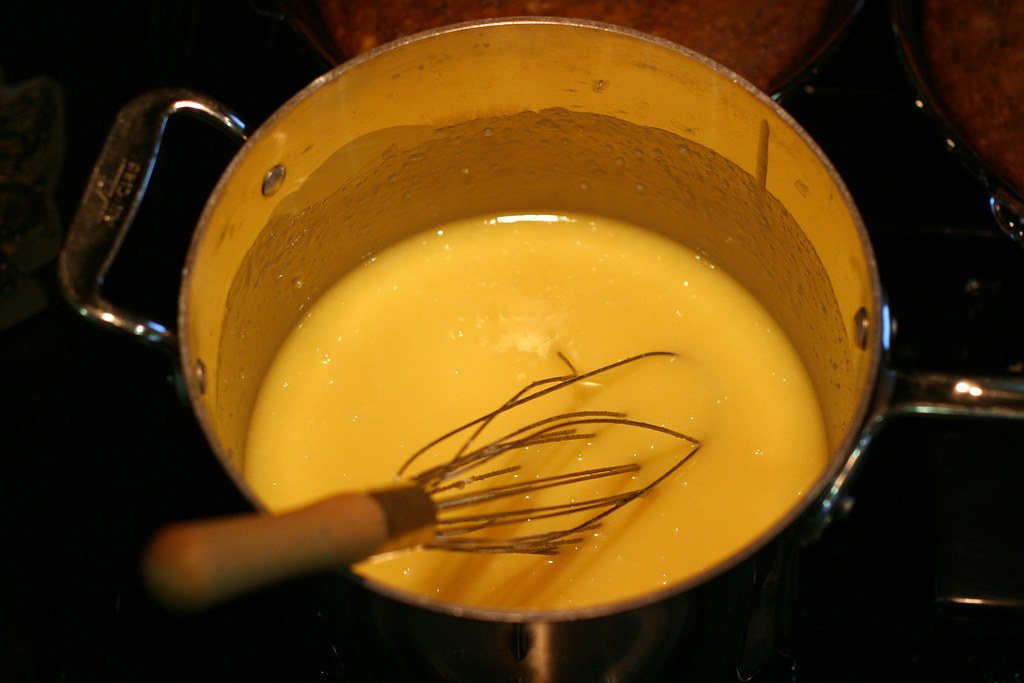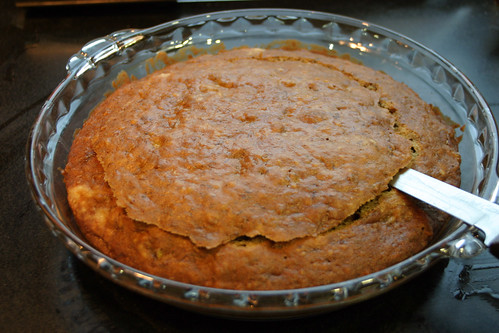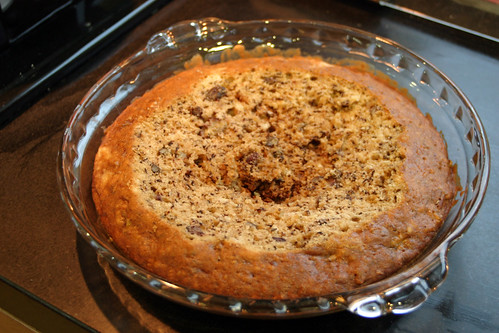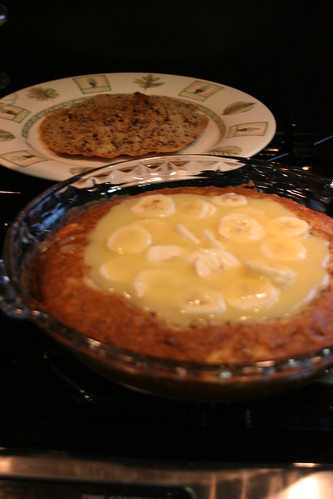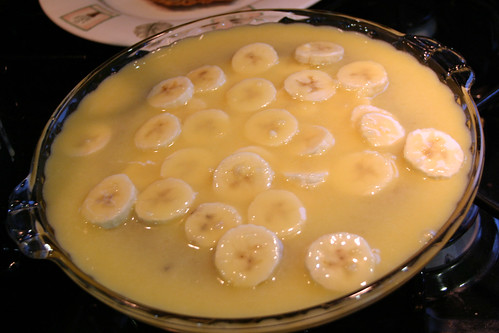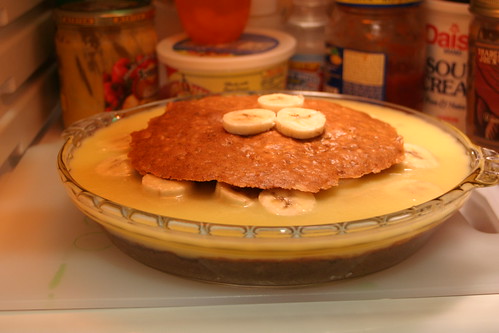 Both of these fruits seem plentiful, tasty, and cheap right now, so I bought a fair quantity for the week. Grandson of Food (age 2-1/2 these days) is really into smoothies for breakfast, and I thought he might like a change from the usual banana smoothie that he helps me make by peeling the banana and putting it along with the ice cubes in the blender. Well, toddlers don't really like variety, so I had a lot of mangoes to use up and thought I'd try a variation on the Tarte Tatin, an upside-down apple tart with a crust on the bottom and caramel on top made in a heavy pie pan or a skillet.
Both of these fruits seem plentiful, tasty, and cheap right now, so I bought a fair quantity for the week. Grandson of Food (age 2-1/2 these days) is really into smoothies for breakfast, and I thought he might like a change from the usual banana smoothie that he helps me make by peeling the banana and putting it along with the ice cubes in the blender. Well, toddlers don't really like variety, so I had a lot of mangoes to use up and thought I'd try a variation on the Tarte Tatin, an upside-down apple tart with a crust on the bottom and caramel on top made in a heavy pie pan or a skillet.
I made this one in a heavy tin lined copper 11-inch tarte tatin pan, but any heavy skillet of the appropriate size that can be put in the oven, such as a cast iron skillet, will do. Before beginning, make sure that you have a plate or platter larger than the pan and ideally with a little depth to it for unmolding the tart. You are going to put the plate on top of the hot pan straight from the oven, before the caramel hardens, and with a towel or oven mitts to avoid burning yourself, you're going to flip the plate and pan together, and steaming hot liquid is going to pour out over the fruit, so it is very important that the plate be large enough.
Start by making a single pie crust dough using your favorite recipe, shape it into a flat disk, and refrigerate for at least an hour.
You can do this with just about any fruit that appeals to you. Apples are traditional. I had four good sized mangoes and about a pint of strawberries, so I peeled and sliced the mangoes and macerated them in the juice and zest of one lemon and a half cup of sugar for about a half hour, and sliced the strawberries, organizing them in two piles roughly by size so that it would be easier to arrange them in the tart. Mangoes have a large, slippery, flat stone in the center, so to cut them, find the seam in the fruit, and cut first along one side, then the other with a large knife, and then with a smaller knife, cut the remaining fruit off the pit and peel the two large pieces. Slice the fruit about a quarter-inch thick or thicker, so that it holds its shape in the oven.
Melt six tablespoons of butter in the pan on medium-high heat and add one cup of sugar to the pan, stirring until the sugar melts and begins to form a brown caramel. Turn down the heat and stir to incorporate the butter, then remove from heat. If you like salted caramel, sprinkle two or three good sized pinches of salt on the caramel. A crunchy, flaky sea salt would be a good choice.
Drain the fruit well in a colander, and arrange in the pan on top of the caramel. Remember that the bottom layer you make now will be the top layer when the tart is unmolded, so use the best slices first and think about how it will look upside down. The remaining slices can be piled on more randomly.
Preheat the oven to 425 degrees F.
 Put the skillet or tarte tatin pan back on the stovetop on medium high heat and cook the fruit for about 20-25 minutes, smoothing it down with a spatula as it cooks, but don't stir or fold it. You want to keep the caramel layer mostly on the bottom. Once the caramel starts bubbling up and the fruit releases its juice, baste the fruit with a turkey baster. After about ten minutes, cover the pan, and baste every few minutes. The liquid should be thickening.
Put the skillet or tarte tatin pan back on the stovetop on medium high heat and cook the fruit for about 20-25 minutes, smoothing it down with a spatula as it cooks, but don't stir or fold it. You want to keep the caramel layer mostly on the bottom. Once the caramel starts bubbling up and the fruit releases its juice, baste the fruit with a turkey baster. After about ten minutes, cover the pan, and baste every few minutes. The liquid should be thickening.
Remove the pan from the heat and roll out the pie crust about an inch larger than the diameter of the pan, and center the crust on top of the fruit, pushing the overhanging dough down inside the walls of the pan. It's okay if the juice oozes out of the sides of the crust. Cut four ventilation holes in the crust.
Bake for 20 minutes, until the crust is lightly browned. Remove from the oven and tilt the pan to check that the liquid has thickened. It should be about as thick as honey on a warm day. If it hasn't, and the crust is done, put the pan back on the stovetop and reduce it some more on high heat.
Toddlers--out of the kitchen.
Now, before it cools, put the plate on top of the pan and flip them together, bearing in mind that the pan and the fruit are very hot, and you want to be sure you have a firm grip on everything, using oven mitts or a towel to protect your hands. Do this quickly, but not so quickly that hot liquid flies out or the hot pan slips off the plate. It would be a good idea to wear an apron. Shake the pan a bit and remove it. Liquid will pour down the sides of the tart. If some pieces of fruit have fallen out of place, you can use a tongs or a fork to rearrange them.
If you aren't suffering from third-degree burns, serve the tart as you would serve a pie--it can be warm or cold, and is good with ice cream, whipped cream, or crème anglaise.






 Cake or Pie?
Cake or Pie?